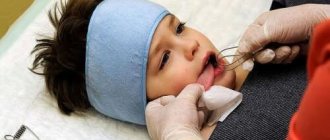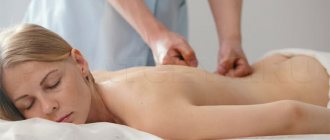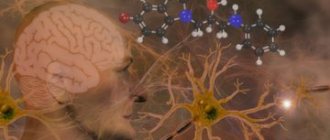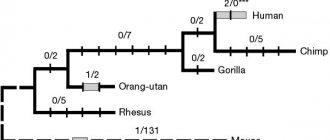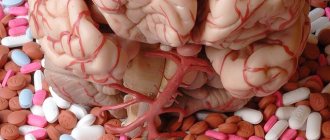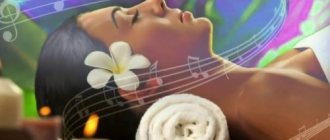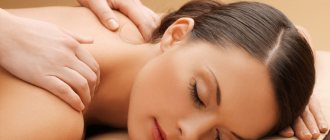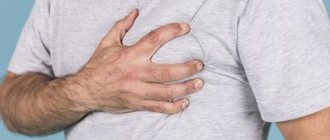December 3, 2021 Speech development defects in children (dysarthria) usually have complex causes. This may be disturbances in the speech centers of the brain, problems with the transmission of nerve impulses, or insufficient mobility of the speech organs. The main method that helps children begin to speak normally is speech therapy massage for dysarthria. It can be compared to training in the gym, because the speech organs - and, above all, the tongue - are controlled by the work of the muscles. With the help of the procedure and regular exercises, you can quickly achieve good pronunciation of all sounds, including the most complex ones.
Correction of dysarthria with massage in children
Speech therapy massage for various forms of dysarthria involves mechanical effects on various parts of the face and on the tongue. As a result, pathological symptoms in the peripheral part of the speech apparatus are eliminated, and muscle tone changes.
As a result, in the child, the strength of muscle spasms and their number decreases, and muscle tone normalizes with dysarthria (articulatory and facial muscles). The mobility of the speech organs is restored, blood flow in the soft tissues of the face and brain improves.
These factors help improve the quality of speech: it becomes smooth, expressive, and understandable to others. The baby begins to behave calmer and sleeps better.
Speech therapy massage is prescribed only by a speech therapist after a detailed examination. The specialist assesses the degree of the violation and, depending on this, selects an individual correction scheme.
Contraindications
Speech therapy massage for children with dysarthria cannot be performed when the child has:
- rash, swelling of various types on the skin;
- exacerbation of herpes infection;
- colds, viral diseases;
- inflammatory processes of the oral cavity and lips - stomatitis, gingivitis, caries, fungal infection;
- inflammatory processes of nearby organs - conjunctivitis, rhinitis, lymphadenitis, furunculosis;
- cuts, abrasions, hematomas;
- severe chronic diseases - oncological, cardiovascular, hematological, neurological, psychiatric.
Face massage
The correct sequence for a relaxing massage is as follows: first, apply to the face and lips, then to the tongue.
Facial massage for dysarthria involves rubbing, kneading, and stroking. Before the procedure, remove jewelry and keep your nails short. The first sessions are short, the duration gradually increases.
The classic version begins with kneading movements in the forehead area. The movements are smooth, from the central part towards the temples. Then stroking from the eyebrows to the hairline with the pads of all fingers.
You cannot press hard on the eyelids: all movements should be light, stroking. The direction is circular, clockwise.
In the cheek area, it is necessary to relax the muscles by stretching them from the mouth towards the temples, and from the cheekbones - downwards, towards the chin. After this, we move to the nose, smoothly rubbing the wings up and down, stroking the nasolabial fold in the direction from the nose to the corners of the lips.
Articulatory lip massage for dysarthria involves kneading with vibration movements, then rubbing from the middle of the lips to the corners. Then they rub the chin and stroke the ears.
When a child has facial asymmetry, different muscle tone on the left and right, pay more attention to the affected side to achieve normalization of muscle tone in dysarthria.
Acupressure for dysarthria
To restore speech function in patients with dysarthria, reflexologists use acupressure massage. It is combined with motor exercises and self-massage for dysarthria, since active motor exercises increase the patient’s chances of recovery. The main principle of treatment using acupressure is to restore patency and activate the activity of meridians, normalize the circulation of energy and blood.
To treat dysarthria and contracture of the tongue muscles, reflexologists use a tonic acupressure technique. Affects the following points:
- The junction of the posteromedial and external calcaneal meridian is located on the border of hair growth in the soft part of the occipital recess;
- Conjugation of the anteromedian meridian and the internal supporting meridian" - located under the chin, at the elevation of the protrusion of the larynx, under the base of the tongue (on the upper edge of the thyroid cartilage;
- Located in the recess between the tendons of the flexor carpi ulnaris and flexor digitorum (to determine the location of this point, the patient is asked to clench the hand into a fist and bend it to the forearm).
The patient can also perform acupressure massage independently. The first sessions should be carried out under the supervision of a reflexologist.
Speech therapy tongue massage
The tongue is the main organ of speech. Therefore, speech therapy massage of the tongue for dysarthria is a necessary element of treatment. Helps fight weakness, limited muscle mobility, paresis and paralysis. Specialists use several techniques in their work. Let's take a closer look at them.
Massage with a toothbrush
A toothbrush, due to its bristles, perfectly warms up the tongue. It can be used both in classes with a speech therapist and for independent speech therapy massage at home. The approximate steps are as follows:
- Place a paper napkin or handkerchief under your tongue to prevent saliva from running off and irritating your skin. When the napkin gets wet, you need to change it;
- the child should relax his tongue as much as he can;
- first perform circular kneading movements along the back of the tongue, the pressure should not be strong;
- stroking over the entire area of the tongue, intermittent movements, as when brushing teeth;
- the baby tenses his tongue, lifting it upward, you massage the lower part of the tongue and the pit under it.
When massaging, be careful not to trigger a gag reflex in the child.
Tongue massage with fingers
Finger speech therapy massage of the tongue for dysarthria allows you to work all muscle groups, including deep ones. Sessions help relieve hypertonicity of facial and articulatory muscles. To carry out the procedure, you need a clean handkerchief, fabric napkins, and special finger pads.
The stages are:
- Relaxation of the tongue muscles;
- Grab your tongue with two fingers, twist it clockwise and counterclockwise, tap on the back;
- Move towards yourself, while grabbing the tip with three fingers: one from above, two from below;
- Now let's deal with the middle part of the tongue. Also grab your tongue and pull it towards you, holding this position for a couple of seconds;
- Grab your tongue and pull it towards you a little. In this position, use the fingers of your other hand to make squeezing movements over the entire surface of the tongue. They squeezed - they let go, they squeezed - they let go;
- Turns around an axis, while the tongue needs to be placed on one edge, hold it for a couple of seconds, then on the other edge;
- It is also necessary to work with the lips - their role in articulation is significant. Tap them with your fingertips, stretch them up and down, and roll them into a tube.
Speech therapy massage for various forms of dysarthria should be performed once or twice a day, for 15 minutes, for a couple of weeks. The speech therapist will tell you the exact duration and quantity: it all depends on the diagnosis and the degree of impairment. Also consider age: small children cannot sit for long, so choose a few exercises one day and do only them. And the next day, do others.
Probe massage
One of the modern correction methods is probe massage for dysarthria. This is one of the new treatment methods that is gradually gaining popularity. It is carried out using special probes developed by E. V. Novikova, Doctor of Pedagogical Sciences.
The standard set consists of 9 tools, each of which is designed for specific purposes. For example, sleds, shaped like sled runners with rounded ends, are designed to stimulate muscles. The “hatchet” in the form of two flattened loops can be used with both increased (light pressure) and decreased tone (strong pressure) of the muscles.
There are variations by other authors, for example, probes with a su-jok effect for additional stimulation of nerve endings and muscles.
After the sessions, children’s speech breathing normalizes, their voice becomes expressive and strong, defects in sound pronunciation are eliminated, and the condition of the central nervous system improves.
Articulatory massage with probes for dysarthria should not be performed on children under six months; at this age there is no such need.
The sequence of a relaxing massage is determined by a speech therapist/speech pathologist, based on the specific situation, the severity of the disease and the age of the patient. The standard tactics are as follows:
- The tool in the form of a small ball needs to be moved over the entire surface of the tongue;
- Piercing the tongue with a pitchfork-shaped probe. Muscle contraction occurs. Then the doctor makes oscillatory and rotational movements with the instrument at various points for five seconds;
- Using a figure eight, press on the organ at several points;
- “Sleds” come in three sizes. They also make pressing movements;
- "Hatchets" are used to slide with little pressure;
- Use a “crosspiece” or “pusher” to press on the tongue, and then remove the probe. The muscles of the tongue contract.
Probe massage for dysarthria is carried out for a long time: usually in courses of 2–3 weeks. Each movement must be repeated 20–30 times. A repeat course is indicated after a month and a half.
Recommendations
Before starting therapeutic massage sessions for dysarthria, consult with a speech therapist who specializes in your problem. The benefits are achieved only with regular sessions, do them 2-3 times a day, do not forget to take a break once a week. The speed of recovery directly depends on the degree of neglect of the disease. In children with mild to moderate dysarthria, improvements in speech and pronunciation are noticed after a week of regular classes, massages, and treatment.
Prevent the disease in your child from infancy as much as possible. If before the age of one year you begin to have problems with swallowing milk, impaired facial expressions, impaired sucking reflex, or increased salivation, consult a speech therapist.
- This is interesting: quotes about health and a healthy lifestyle
From 3 months, infants are prescribed facial and tongue massage. It should be performed with extreme caution under the supervision of the attending physician. Remember, excessive independence is harmful to children’s health. Be sure to take your children to specialists who are competent in health issues in various areas. The health of children is important for further harmonious, proper development. Dysarthria is treatable in severe stages, but it is advisable to prevent their occurrence.
Is it possible to perform massage at home?
Experts recommend performing speech therapy massage at home. Firstly, this is a guarantee of continuity of treatment, which affects the effectiveness of correction. Secondly, children, especially small ones, are more relaxed in normal circumstances, but with a stranger it can be impossible to even force their mouth to open. Thirdly, at home you can perform a massage at any time: you don’t need to adjust to your schedule or change your routine, which is a stress factor in itself.
Massage your face with your fingers. You can use teaspoons. Instead of probes, when massaging your tongue, you can also use improvised means: spoons or the same toothbrushes. Kneading with your fingers will also help.
It is necessary that you know how to do a relaxing massage for dysarthria. It is important to do all the movements correctly, to know where to press harder and where it is better to use light touches. You can learn through courses. A speech therapist can also show you the basics. If you combine the procedures with a regular massage, the effect will be many times higher. Just keep in mind that it can be relaxing or tonic.
Incorrect technique can cause deterioration: other types of speech disorders may appear, in addition to dysarthria.
We train to navigate in space
- “Whose traces?” . Pictures with traces of hands and feet are needed. The baby must determine which arm or leg is right and which is left.
- "Supermarket" . The parent asks the child to arrange the goods: “on the shelf”, “near the cash register”, “to the right of the cookies”, “under the counter”.
- Counting sticks. Can be replaced with matches. The parent makes some figure out of them, and the baby makes a similar one according to the image.
This complex can also be performed at home.
Important rules of logomassage
Articulation massage for dysarthria is undoubtedly an effective method of correction. To benefit and avoid complications, the following conditions must be met:
- All stages of treatment are controlled by a speech therapist: drug treatment, physiotherapy, massage. Therefore, choosing a specialist is one of the fundamental moments in therapy;
- In addition to professional qualities, it is important to establish emotional contact between the speech therapist and the child. This means that a specialist must be able to find a common language with children of different ages. If the child behaves awkwardly and starts throwing tantrums during sessions, there will be no benefit from such procedures, no matter what credentials the speech therapist has;
- The room in which a relaxing massage for dysarthria is performed should be comfortable. It is necessary to ventilate it, remove distracting objects;
- It is better to do the procedures while lying down. But if the child is so uncomfortable, he can sit down;
- The child should be in a good mood, well-fed and happy. Treatment cannot be carried out when he is tired, emotionally overworked or sick. During the massage he should not experience discomfort or pain;
- Your mood is also important. If you are excited and nervous, the baby will feel it and will also begin to worry;
- If you use a spoon or brush, purchase them specifically for massage;
- The sooner you start therapy, the faster you will get results. Therefore, pay attention to the child’s speech, especially if he is at risk: your pregnancy and childbirth were difficult, you were sick during pregnancy, the child had a traumatic brain injury, he was seriously ill for a long time, you have close relatives with speech problems. disorders. The first “bells” are limited mobility of the lips, palate, tongue, difficulties with sucking and swallowing food. Nasal and slurred speech when the child begins to talk. If you notice these symptoms, consult your doctor;
- The procedures will be effective only with an integrated approach. This means that at the same time lessons are held with a speech therapist on sound production, breathing exercises, and the development of fine motor skills.
Be patient. Lead a normal life: let your baby feel that he is no different from the rest, that he is also loved and appreciated. This is an important point that will undoubtedly help him cope with his problems.
